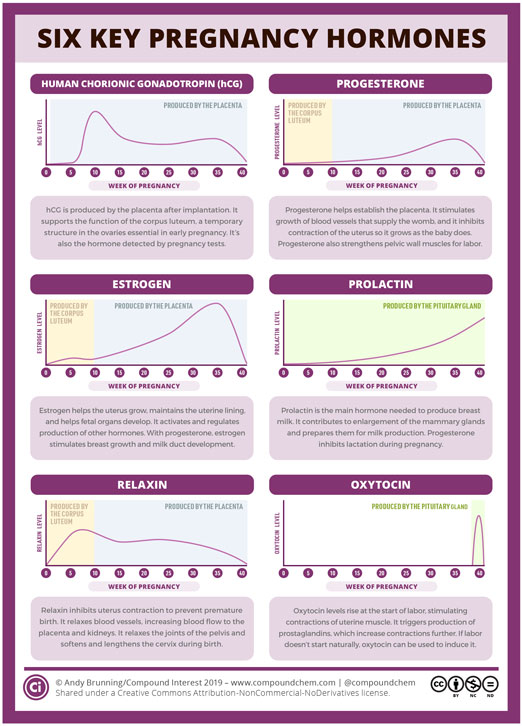
This Article From Issue
January-February 2020
Volume 108, Number 1
Page 8
DOI: 10.1511/2020.108.1.8
Human Chorionic Gonadotropin (hCG)
hCG is produced by the placenta after implantation. It supports the function of the corpus luteum, a temporary structure in the ovaries essential in early pregnancy. It's also the hormone detected by pregnancy tests.
Progesterone
Progesterone helps establish the placenta. It stimulates growth of blood vessels that supply the womb, and it inhibits contraction of the uterus so it grows as the baby does. Progesterone also strengthens pelvic wall muscles for labor.
Estrogen
Estrogen helps the uterus grow, maintains the uterine lining, and helps fetal organs develop. It activates and regulates production of other hormones. With progesterone, estrogen stimulates breast growth and milk duct development.
Prolactin
Prolactin is the main hormone needed to produce breast milk. It contributes to enlargement of the mammary glands and prepares them for milk production. Progesterone inhibits lactation during pregnancy.
Relaxin
Relaxin inhibits uterus contraction to prevent premature birth. It relaxes blood vessels, increasing blood flow to the placenta and kidneys. It relaxes the joints of the pelvis and softens and lengthens the cervix during birth.
Oxytocin
Oxytocin levels rise at the start of labor, stimulating contractions of uterine muscle. It triggers production of prostaglandins, which increase contractions further. If labor doesn't start naturally, oxytocin can be used to induce it.


American Scientist Comments and Discussion
To discuss our articles or comment on them, please share them and tag American Scientist on social media platforms. Here are links to our profiles on Twitter, Facebook, and LinkedIn.
If we re-share your post, we will moderate comments/discussion following our comments policy.